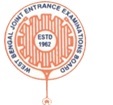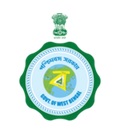wbjeeb.nic.in JECA 2024 MCA Admission Entrance Test : West Bengal Joint Entrance Examinations Board
Organisation : West Bengal Joint Entrance Examinations Board WBJEEB
Exam Name : JECA-2024 MCA Admission Entrance Test
Applicable State/UT : West Bengal
Exam Date : 14.07.24
Last Date : 30.04.24
Website : https://wbjeeb.nic.in/jeca/
| Want to comment on this post? Go to bottom of this page. |
|---|
Contents
WBJEEB JECA
West Bengal Joint Entrance Examinations Board (WBJEEB) will conduct common entrance test JECA-2024 and counselling for admission into Master of Computer Application (MCA) course in various institutions in West Bengal for 2024-25 academic session.
Related / Similar Entrance : WBJEEB JEMScN 2024 Common Entrance Test for M.Sc Nursing

Schedule Of JECA
1 Online application with payment of fees 02.04.24 (Tuesday) to 30.04.24 (Tuesday)
2 Online correction and downloading revised confirmation page 02.05.24 (Thursday) to 03.05.24 (Friday)
3 Publication of Downloadable Admit Card 05.07.24 (Friday) (tentative) to 14.07.24 (Sunday) (11.00 a.m.)
4 Date of Examination: 14.07.24 (Sunday) (Tentative and may be changed in extraordinary circumstances) 11.00 a.m. to 1.00 p.m.
Eligibility Criteria for JECA
a) Citizenship: Applicant must be a Citizen of India.
b) Qualification: Passed/appeared in Undergraduate Level and final Semester Examination.
How to Apply Online for JECA?
1. Login: The very first step the candidate needs to do is to click on the link provided in the website of the Board i.e. wbjeeb.nic.in / wbjeeb.in Once the candidate clicks on the link for registration the following page appears:
** Candidate must note the important instructions marked in area (a).
** Area (b) is for logging in of candidates who have already registered. A candidate while 9illing-up the application form can log-out at any point of time. In that case, he/she has to again login as “Registered Candidate” and complete the entire procedure within the stipulated time period.
** Area (c) is for fresh registration of new candidates.
The candidate may click on <New Candidate Registration> to proceed further.
2. After clicking on “New Candidate Registration” option, the following page will appear where the general instructions are given. The candidate is required to go through the instructions carefully and click on <I Agree>, as encircled below to proceed further.
3. In the next step, the following page appears where the candidates need to:
** Input their personal details i.e. Name, Father’s name, Mother’s name, Date of Birth
** Choose Gender and Identification type from the dropdown
** Provide Identity No, Valid Mobile Number and Email Id.
** Create his/her own password as per the specifications mentioned.
** Provide the Security PIN
** Then click on <Submit>, as encircled below to proceed further.
4. Once he/she clicks on the above “Submit button”, the following page will appear wherein he/she has to click on <Yes> to proceed further.
5. After clicking on the above “Yes” button, the following page will appear. The candidate can either click on<Edit> if he/she wants to edit or change any data or can click into <Submit & Next> option.
6. In the next step, the candidate will receive Two different OTP, one in the Valid Registered Mobile Number and another in the Valid Registered E-mail Id. The Candidate is advised to put any one (either Mobile OR E-mail) OTP for verification. Then he/she has to click on <Verify & Final Submit>, as encircled below.
7. Once the verification is done, the following page will appear. The page shows that the registration is complete. An application number will be generated (as marked in a). The candidate is advised to note down the application number for future references. The candidate then needs to click on <Fill Application Form> as encircled to continue further.
8. Next the entire application form of the candidate will appear wherein he/she is advised to input data in the respective fields.
Now there are two parts:
** Upper Part which is already filled by the system from the data given by the candidate at the time of Registration.
** Lower Part which will be filled by the candidate, includes:
i. Nationality
ii. State of Domicile
iii. Religion
iv. Category
v. Sub Category (which includes Person with Disability, Type of Disability and Percentage of Disability).
vi. Qualifying Examination which the candidate has to choose from the dropdown)
N.B – For outside West Bengal Candidates, the Category will appear as “General” by default. After filling the entire application form, the candidate is advised to click on <Save & Next>, as encircled above to proceed to the next step.
9. On completion of the above procedure, the Qualification Details page will appear containing the name of the Examination the candidate has passed (based on the input he/she has given in the Qualifying Examination of Application Form). For example, if a candidate has passed BSc (Major)-Computer Application, the following page will appear:
The candidate is required to input Passing Status, Passing/Appearing Year, Institute Name & Address and Institute Pincode and then click on <Save & Next> button to proceed further.
10. The candidate now has to fill the <Correspondence Address>. If the correspondence address is same as <Permanent Address>, then he/she can simply tick on the checkbox (as encircled) and choose Save & Next option.
11. In the next step, the candidate has to select the State and Exam City according to his/her preference from the dropdown. Then he/she is required to simply click on <Save & Next>, to proceed further.
12. The next step asks for Uploading of Photograph and Signature of candidates as shown below wherein he/she has to choose image and signature according to the specifications mentioned. The candidate is then advised to click on <Submit and Preview>, as encircled to continue further.
13. As soon as the Photograph and Signature is uploaded, the candidate is advised to click on the Self Verified check box, (as circled) and then click on <Save Finally & Next>.
14. On clicking “Save Finally & Next”, once again a pop-up message will appear as “Do you wish to save” (as shown below). The candidate is advised to click on OK button to proceed further. If the candidate clicks on Cancel Button, he/she will be redirected to the previous page.
15. In the next step, his/her entire application form will appear as shown below. After going through the entire application form carefully, the candidate is advised to click on the Declaration checkbox (as shown in a) and click on <Save & Final Submit> (as encircled and shown in b), to proceed to the next step.
16. After clicking on “Save & Final Submit” option, the following page will appear wherein the system will ask whether he/she is ready for final submission or not. Once the YES button is clicked, no further changes or editing of data can be done. Therefore, the candidate is advised to go through the filled data again and after successful verification, click the Yes button.
17. In the next step, the following page appears where the candidate is advised to click on <Pay registration fees>, as encircled below.
18. The candidate now has to click on <Online Payment> and then click on <Pay Fee> as encircled for payment of Registration Fees, as shown below.
** The amount of Registration fees is Rs.400/- for Third Gender, SC, ST, OBC-A, OBC-B and EWS Candidates.
** The amount of Registration fees is Rs.500/- for other Candidates.
19. After successful payment of Registration Fees, the following page will appear. The candidate then needs to click on Download Con9irmation Page, as encircled.
20. On clicking on “Download Confirmation Page”, the following confirmation page will be downloaded.

JECA syllabus
The papers will be based on Undergraduate Computer Application and equivalent courses followed in various Universities in India and on the following topics.
1. C Programming: Variables and Data types, IO Operations, Operators and Expressions, Control Flow statements, Functions, Array, Pointers, String Handling, Structures and Unions, Files Handling, Pre-Processor Directives, Command Line Arguments.
2. Object Oriented Programming: Data Types, If / Else If / Else, Loops, Function, Switch case, Pointer, Structure, Array, String, Function Overloading, Function templates, SCOPE of variable, Type aliases (typedef / using), Unions, Enumerated types (enum), Class, Constructors, Overloading Constructors, Member initialization in constructors, Pointers to classes, Overloading Operators, Keyword ‘this’, Static Members, Const Member Functions, Class Templates, Template Specialization, Namespace, Friendship (Friend Functions & Friend Classes), Inheritance, Polymorphism, Virtual Members, Abstract base class.
3. Unix: Following commands and its different options: Is, ps, pwd, mv, cp, touch, cat, time, cal, bc, sort, diff, wc, comm, In, du, kill, sleep, chmod, chown, chgrp, top, nice, renice, cut, paste, grep, file, whereis, which, echo, env, PATH, CLASSPATH, find. vi editor, shell, wildcard, shell script.
4. Data Structure: Searching, Sorting, Stack, Queue, Linked List, Tree, Graph.
5. Introduction of Computers: Bus structure, Basic I/O, Subroutines, Interrupt, DMA, RAM, ROM, pipeline, system calls.
6. Operating System: Process, Thread, CPU Scheduling, Deadlock, Synchronization, Memory Management, Disk Management, File Management.
7. Computer Network: Concepts of networking, Application areas, Classification, Reference models, Transmission environment & technologies, Routing algorithms, IP, UDP & TCP protocols, IPv4 and IPv6, Reliable data transferring methods, Application protocols, Network Security, Management systems, Perspectives of communication networks.
8. Database Management System: Introductions to Databases, ER diagram, Relational Algebra, Relational Calculus, SQL, Normalization, Transactions, Indexing, Query optimization.
9. Software Engineering: Introduction to Software Engineering, A Generic view of process, Process models, Software Requirements, Requirements engineering process, System models, Design Engineering, Testing Strategies, Product metrices, Metrices for Process & Products, Risk management, Quality Management.
10. Machine Learning: Classification, Decision Tree Learning, Artificial Neural Networks, Support Vector Machines, Bayesian Learning, Clustering, Hidden Markov Models.
Detailed Notification Download here : https://www.entrance.net.in/uploads/pdf2024/22246-j.pdf